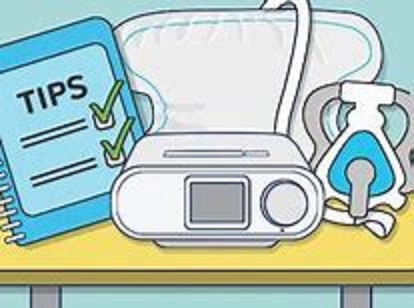
25 Oct CPAP Compliance: How Tele-Monitoring and Early Adherence Predict and Support Long-Term Maintenance of Therapy
- Many patients find difficulty acclimating to CPAP therapy without adequate education and support [1]
- Long-term adherence can be predicted as early as 3 days from therapy implementation[2]
- Patients with <10% adherence at 30 days were unlikely to achieve long-term compliance during one year of follow-up [1]
- CPAP data tele-monitoring with automated patient feedback significantly improves therapy compliance at 3 months without an increase in provider utilisation [3]
- Standardised educational materials which address common problems improve patient tendency to initiate and commit to follow-up appointments with clinicians [4]
While Positive Airway Pressure (PAP) therapy continues to make advances in the comfort of both masks and machines, adherence to therapy continues to pose challenges in long-term management of Obstructive Sleep Apnoea (OSA) and the wider domain of Sleep Disordered Breathing (SDB). Numerous studies have explored the link between education, intervention, and support to promote positive health outcomes beyond the initial acclimation period following implementation of pressure therapies.
Budhiraja et al concluded that of 100 patients, younger demographics pose a significant risk of non-compliance (<4 hours usage per night) regardless of management strategies; this risk decreased proportionally with age, with no sex-related differences observed across the cohort. They also report that long-term compliance can be predicted as early as 3 days into PAP trials, with the subjectively [mis]perceived lack of benefit providing a driving factor.
Hevener et al echoed these findings, showing that patients with <10% compliance at 30 days were unlikely to achieve meaningful adherence to therapy within the year. They suggested that identification and early intervention in these high-risk patients will promote a more cohesive patient-clinician relationship with better long-term outcomes.
Chang et al pro-actively assessed this assertion with a 556-patient study in which they showed that PAP tele-monitoring and automated patient feedback significantly improved 3-month compliance without an increase in clinician utilisation. Adherence rates were 53.5% with no support, 60.7% with educational support, 65.6% with tele-monitoring, and 73.2% with a combination of educational and tele-monitoring support.
Slota et al assessed the efficacy of video-based educational material aimed at addressing common therapy concerns for PAP-naïve patients and found that while there was not a substantial increase in compliance at 3 months, those patients were significantly more likely to seek support and report problems by way of making and keeping interventional appointments with clinicians.
Author: Travis Bell (BNus, BSc, MAppSci(MedPhys)), Sleep Scientist/RN
References
[1] William Hevener and others, 0524 Early CPAP Adherence as a Primary Predictor of CPAP Adherence at One Year, Sleep, Volume 46, Issue Supplement_1, May 2023, Page A231, https://doi.org/10.1093/sleep/zsad077.0524 [2] Rohit Budhiraja, MD and others, Early CPAP Use Identifies Subsequent Adherence to CPAP Therapy, Sleep, Volume 30, Issue 3, March 2007, Pages 320–324, https://doi.org/10.1093/sleep/30.3.320 [3] J Chang and others, 0509 impact of automated web-education and CPAP tele-monitoring on CPAP adherence at 3 months and 1 year: the tele-OSA randomized clinical trial, Sleep, Volume 40, Issue suppl_1, 28 April 2017, Pages A189–A190, https://doi.org/10.1093/sleepj/zsx050.508 [4] K A Slota and others, 0646 Evaluation of Increased CPAP Compliance After Electronic Learning Video Aimed at Troubleshooting Common CPAP Related Problems, Sleep, Volume 43, Issue Supplement_1, April 2020, Pages A246–A247, https://doi.org/10.1093/sleep/zsaa056.642

